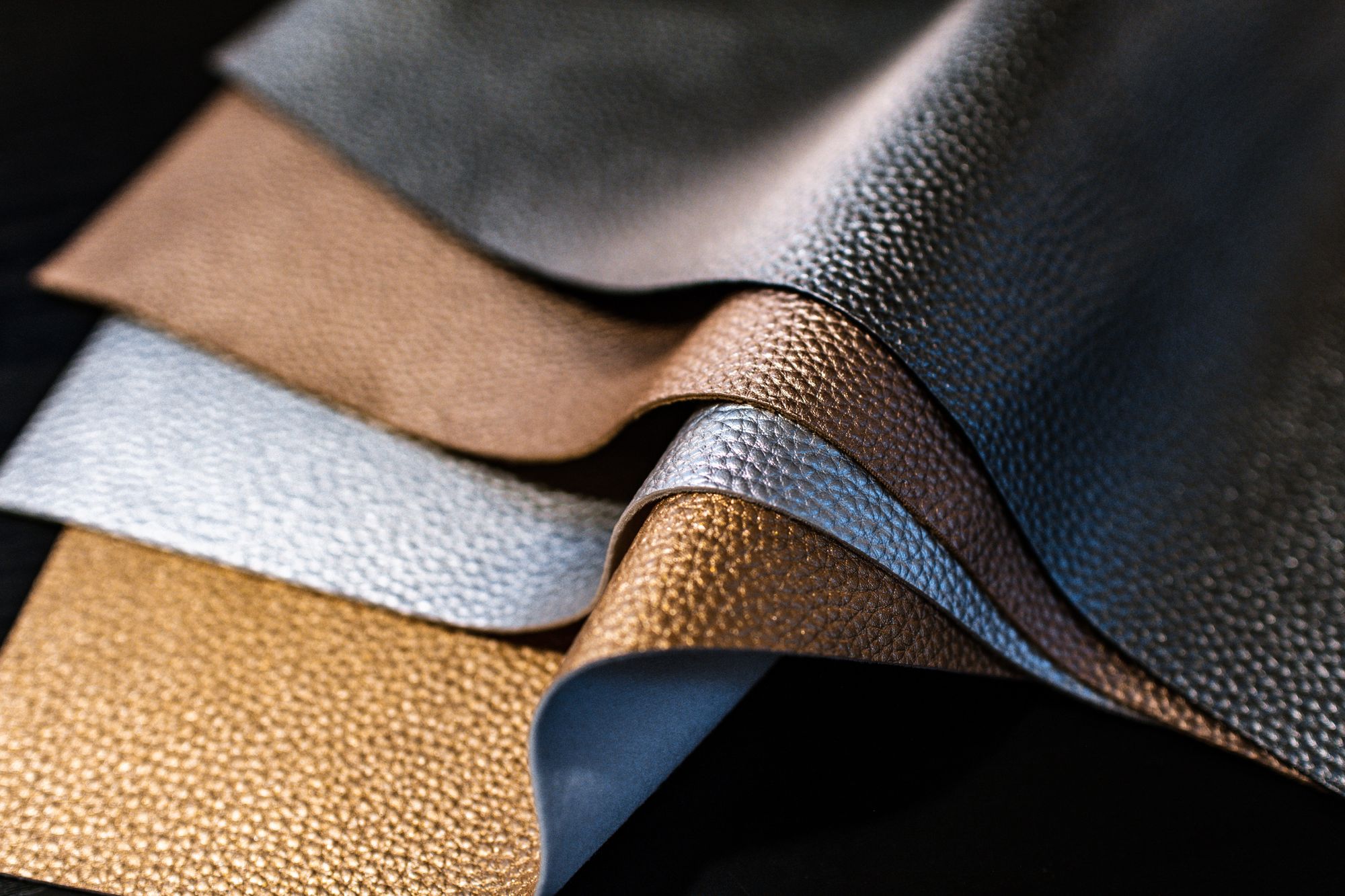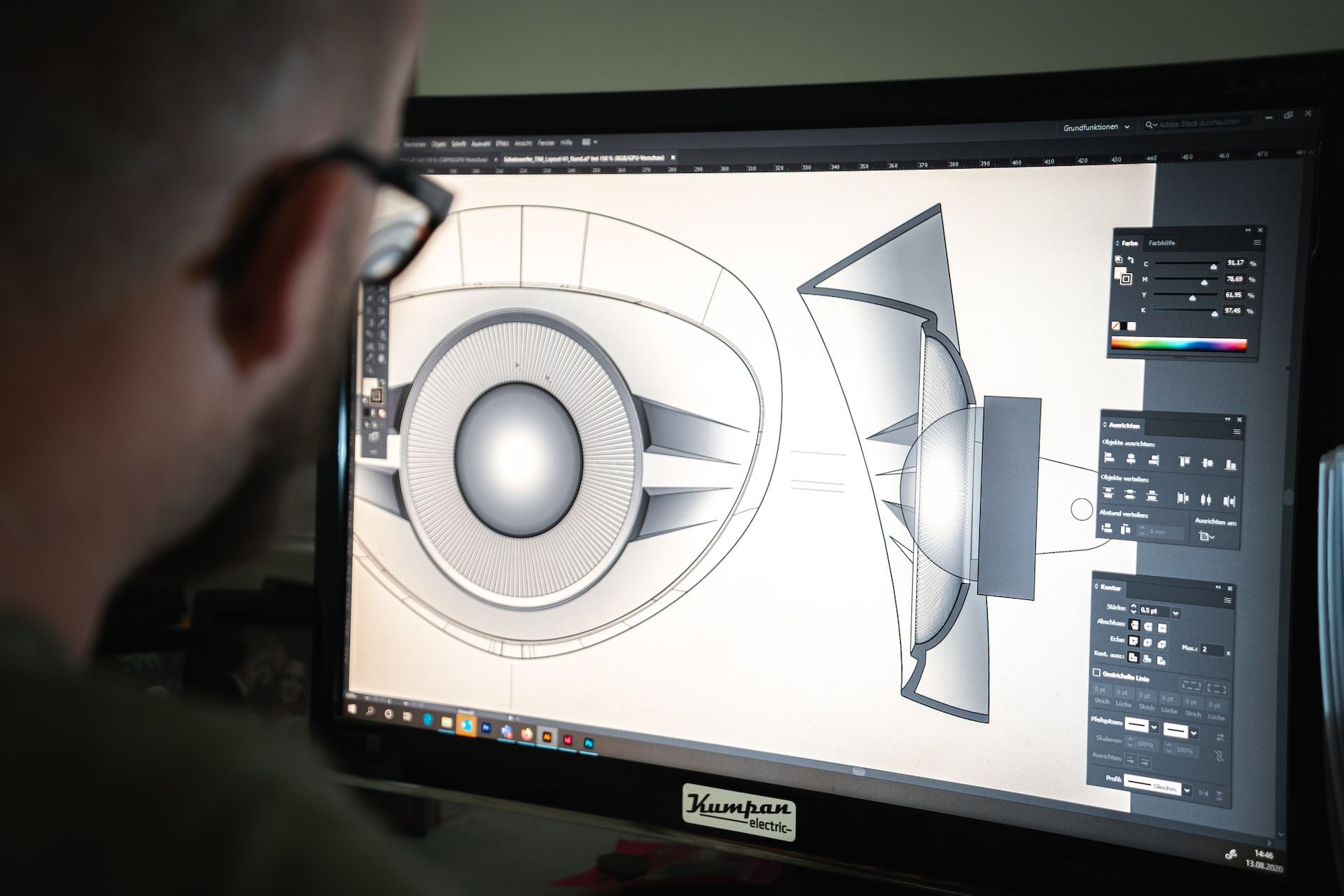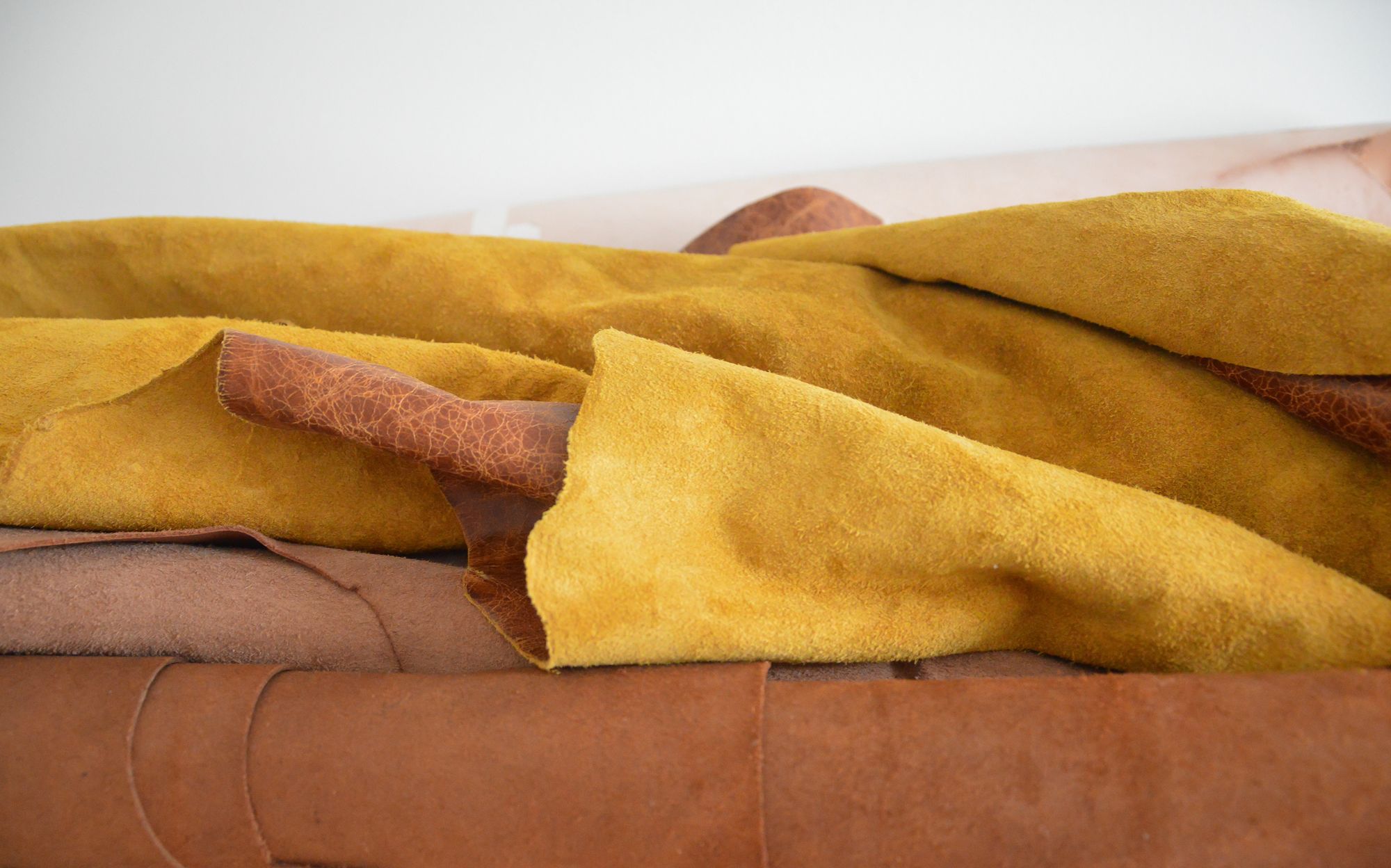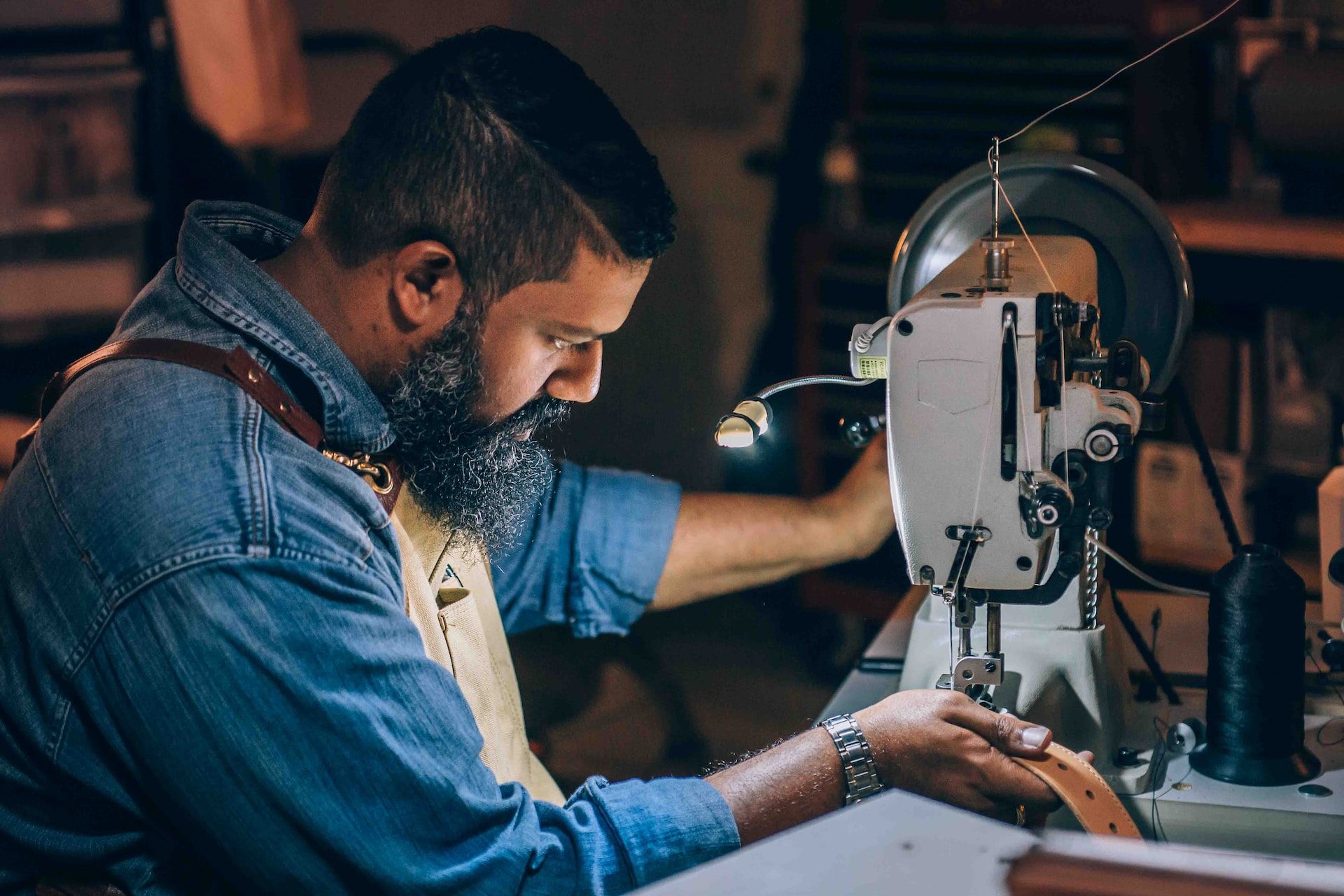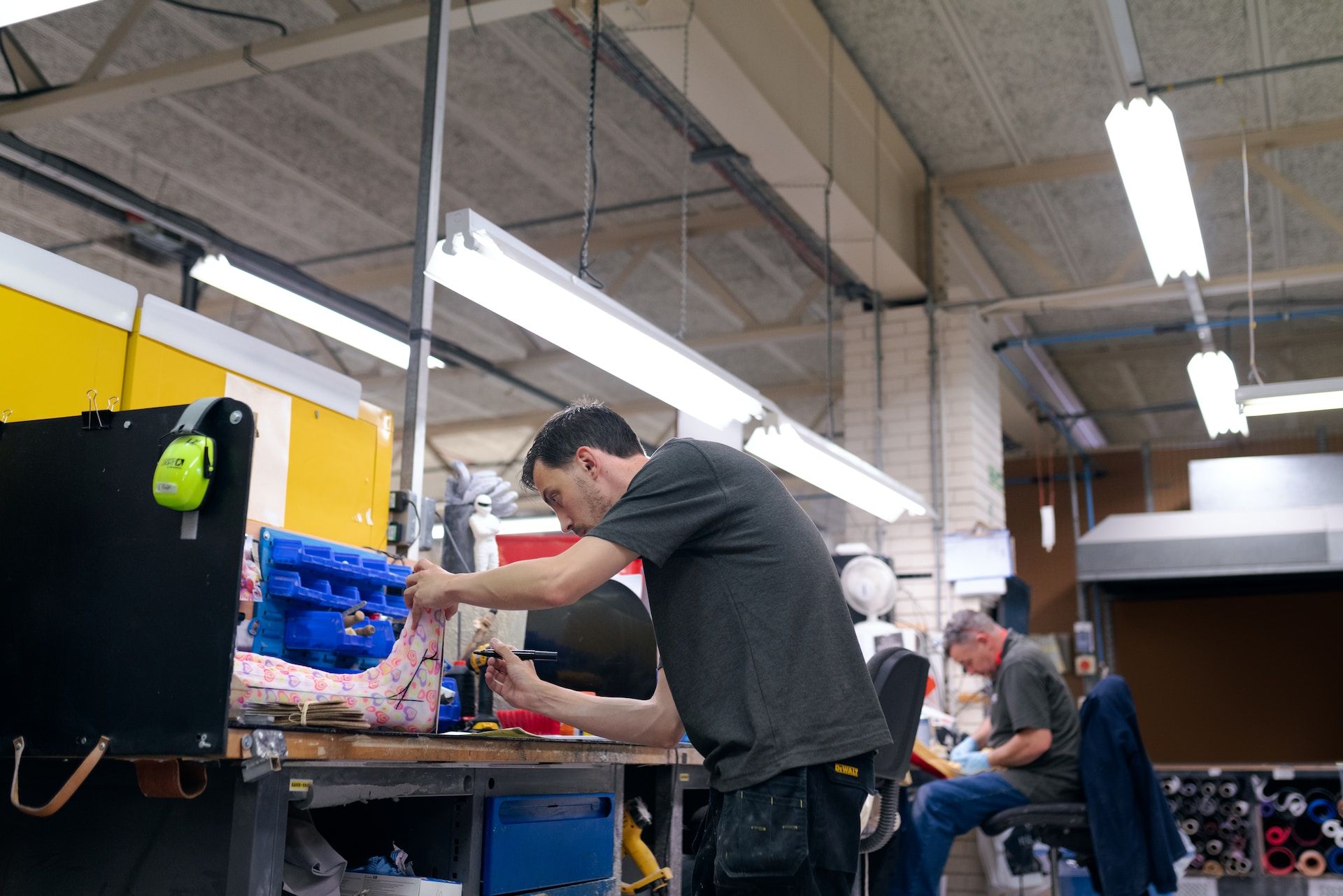Leather is a widely used material in the industry for its durability, versatility, and luxurious feel. However, the quality of leather products can vary greatly depending on the manufacturing process and the quality control measures in place.
In order to ensure that leather products meet the highest standards of quality and safety, it is essential to implement effective quality control procedures throughout the manufacturing process.
There are a lot of variables that go into the quality control for leather manufacturing. Anyone who has ever worked with leather knows just how tough it is to get consistent results from piece to piece. But that hasn't stopped companies from trying to improve their process.
In this article, we'll take a look at leather manufacturing quality control and its associated concepts. Let’s take a look at the table of content below:
- Leather Manufacturing Quality Control: An Overview
- Importance of Quality Control in the Leather Manufacturing Industry
- Leather Manufacturing Quality Control Process
- Best Approaches for Quality Control in Leather Manufacturing
- Benefits of Adhering to Best Practices for Quality Control
- Common Quality Control Issues in Leather Manufacturing
- Case Studies
- Frequently Asked Questions (FAQs) Associated with Leather Manufacturing Quality Control
- Wrapping Up
- How Deskera Can Assist You?
Let's get started!
Leather Manufacturing Quality Control: An Overview
Leather manufacturing quality control (QC) refers to the process of ensuring that leather products meet specific quality and safety standards throughout the manufacturing process.
This further includes conducting tests and inspections at various stages of production to identify and address any defects or issues that may compromise the quality of the final product.
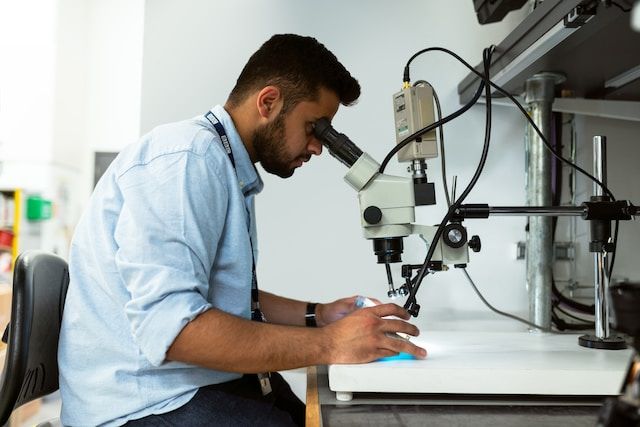
Effective quality control measures are essential for improving the quality and consistency of leather products, reducing waste and rework, enhancing customer satisfaction, and maintaining the reputation of the manufacturer as a reliable and trustworthy supplier of high-quality leather goods.
The process involves implementing guidelines and requirements from industry standards and regulations, as well as keeping track of the origin and history of the leather used in the products to ensure ethical and sustainable sourcing.
Importance of Quality Control in the Leather Manufacturing Industry
Quality control is essential in the leather manufacturing industry for several reasons. First, it helps ensure that the final product meets the desired quality standards, including durability, consistency, and appearance. This, in turn, improves customer satisfaction and helps build brand reputation.
Second, quality control in manufacturing helps identify and address potential issues early in the manufacturing process, reducing waste, and saving time and money. By implementing effective quality control measures, manufacturers can catch defects, flaws, and inconsistencies before they become larger problems that require costly rework or even result in product recalls.
Third, quality control is critical for compliance with industry regulations and standards. In many countries, leather manufacturers are required to meet specific quality standards to ensure the safety and health of consumers.
Overall, quality control is a crucial aspect of leather manufacturing that can impact the quality of the final product, brand reputation, customer satisfaction, compliance with regulations, and ultimately, the success of the business.
Leather Manufacturing Quality Control Process
The process of leather manufacturing involves several steps, each of which is critical to producing high-quality leather products. These steps include:
- Pre-tanning: In this stage, the hides are washed, soaked, and fleshed to remove any impurities, such as dirt and hair. Quality control checks at this stage may include assessing the condition of the hides, checking for any defects, and ensuring that they are of the required thickness and size.
- Tanning: During tanning, chemicals are used to convert the protein fibers in the hides into a stable material that resists decay. Quality control checks at this stage may include monitoring the chemical process, checking the pH levels of the tanning solution, and ensuring that the hides are properly tanned.
- Re-tanning and dyeing: After tanning, the leather is re-tanned and dyed to achieve the desired color and texture. Furthermore, quality control checks at this stage may include monitoring the color and texture of the leather, checking for any defects or inconsistencies, and ensuring that the leather is properly stretched and dried.
- Finishing: In the final stage, the leather is treated with oils, waxes, and other chemicals to give it the desired finish and feel. Quality control checks at this stage may include checking the finish of the leather, assessing its durability, and ensuring that it meets the required specifications.
Throughout the leather manufacturing process, quality control plays a crucial role in ensuring that the final product meets the required standards.
It involves monitoring and testing the raw materials, intermediate products, and finished products to identify any potential quality control issues. This helps to ensure that any defects or inconsistencies are identified early on, before they can impact the final product's quality or usability.
Identifying potential quality control issues early in the process is important for several reasons. First, it can help to prevent defects from occurring in the final product, which can save time and money.
Second, it can help to ensure that the finished product meets the required specifications, which can help to avoid customer complaints or returns. Finally, it can help to improve overall efficiency by reducing the need for rework or repairs.
In summary, quality control is a critical component of the leather manufacturing process. By identifying potential quality control issues early in the process, manufacturers can ensure that their final product meets the required specifications and is of high quality, which can lead to increased customer satisfaction and loyalty.
Best Approaches for Quality Control in Leather Manufacturing
Following, we've discussed best practices for quality control in leather manufacturing. Let's discuss:
(A) Best Approaches
Following, we’ve discussed some best practices for leather manufacturing quality control. Let’s discuss:
- Develop Quality Control Processes: Developing a comprehensive quality control process is essential to ensure that all aspects of the leather manufacturing process are monitored and tested to meet the required quality standards. The process should include regular inspections, testing, and verification of the raw materials, intermediate products, and finished products.
- Establish Quality Standards: Establishing clear and detailed quality standards is essential to ensure that the finished product meets the required specifications. These standards should cover all aspects of the leather manufacturing process, including the quality of the raw materials, tanning process, dyeing, finishing, and packaging.
- Conduct Regular Inspections: Regular inspections of the manufacturing process can help to identify any potential quality control issues early on. This includes inspecting the raw materials, intermediate products, and finished products to ensure they meet the required quality standards.
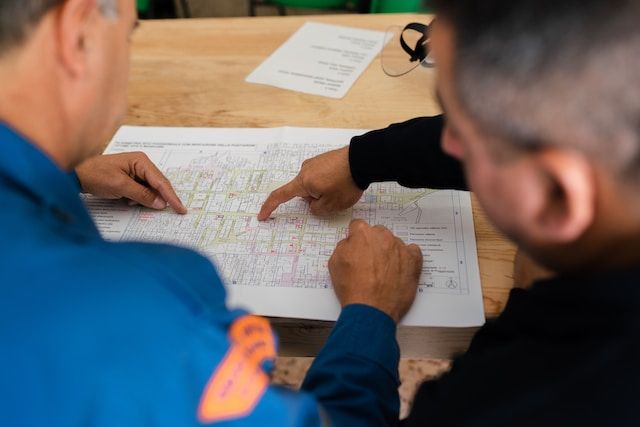
- Perform Quality Tests: Regular quality testing can help to identify any issues that are not visible during inspections. These tests may include measuring the strength, durability, and resistance to wear and tear of the leather, as well as its color fastness and chemical resistance.
- Implement Corrective Actions: If any quality control issues are identified, it is essential to implement corrective actions promptly. This may involve adjusting the manufacturing process or replacing defective products to ensure that the finished product meets the required quality standards.
- Train Employees: Training employees on the importance of quality control and the specific quality standards can help to ensure that all staff members are aware of their role in maintaining the required quality standards. This includes training on proper inspection techniques, quality testing procedures, and corrective action protocols.
- Use Quality Management Software: Using quality management software can help to streamline the quality control process by providing a centralized system for managing inspections, tests, and corrective actions. It can also help to track the progress of the manufacturing process and identify areas for improvement.
Ultimately, implementing these best practices for leather manufacturing quality control can help to ensure that the finished product meets the required quality standards, resulting in increased customer satisfaction and loyalty.
(B) Need for a Comprehensive Quality Control Program
A comprehensive quality control program that covers all aspects of leather production is essential to ensure that the finished product meets the required quality standards.
Furthermore, leather manufacturing involves many complex processes, each of which must be carefully monitored to ensure that the final product is of the desired quality.
For example, quality control in leather manufacturing should cover the following areas:
Raw Materials: The quality of the raw materials used in leather manufacturing is critical to the final product's quality. This includes the quality of the hides, the type of chemicals used, and the water used in the process.
Tanning Process: The tanning process is the most critical stage in leather manufacturing. Quality control measures should be in place to monitor the temperature, pH levels, and chemical composition of the tanning solution.
Dyeing and Finishing: The dyeing and finishing stages are essential to achieving the desired color, texture, and feel of the leather. Quality control measures should be in place to ensure that the dyeing and finishing process is consistent and that the finished product meets the required specifications.
Packaging and Shipping: The final stage of the leather manufacturing process involves packaging and shipping the finished product. Quality control measures should be in place to ensure that the packaging management is appropriate, and that the product is shipped to the correct destination.
A comprehensive quality control program that covers all aspects of leather production helps to ensure that the finished product meets the required quality standards. It also helps to identify potential quality control issues early in the process, which can save time and money by preventing defects from occurring in the final product.
In conclusion, a comprehensive quality control program that covers all aspects of leather production is critical to ensuring that the finished product is of the desired quality. It helps to identify potential quality control issues early in the process, resulting in increased efficiency, decreased waste, and increased customer satisfaction.
(C ) Importance of Employee Training and Education in Quality Control
Employee training and education in quality control are crucial to ensuring that a manufacturing process, such as leather production, meets the required quality standards. Here are some reasons why employee training and education are essential:
- Knowledge and Awareness: Employee training and education help employees understand the importance of quality control and its impact on the manufacturing process's overall success. It also helps them understand how their role in the process affects the final product's quality. This knowledge and awareness can help employees identify potential quality control issues and take corrective actions promptly.
- Consistency and Standardization: Employee training and education can help ensure that quality control processes are consistent and standardized across the manufacturing process. This helps to prevent variations in quality and ensures that the final product meets the required quality standards.
- Improved Efficiency: Properly trained employees can perform quality control tasks more efficiently and effectively. This can help reduce the time and resources required to identify and correct quality control issues, leading to increased productivity and reduced waste.
- Continuous Improvement: Employee training and education can help to foster a culture of continuous improvement in quality control. By regularly educating employees on new quality control methods, technologies, and best practices, manufacturers can continuously improve their quality control processes and stay ahead of the competition.
- Increased Customer Satisfaction: A manufacturing process that consistently produces high-quality products is likely to result in increased customer satisfaction and loyalty. This can lead to repeat business, positive reviews, and referrals.
Consequently, employee training and education in quality control are essential to ensuring that a manufacturing process, such as leather production, consistently produces high-quality products that meet the required quality standards. By investing in employee training and education, manufacturers can reduce waste, increase productivity, and enhance customer satisfaction.
(D) Quality Control Tools
Quality control tools such as inspection checklists and statistical process control (SPC) charts are essential for maintaining and improving the quality of leather production. Here's how they work:
Inspection Checklists:
Inspection checklists are tools used to ensure that all necessary quality control measures are taken during the manufacturing process. These checklists are designed to identify potential quality control issues, and they provide instructions on how to address them. Inspection checklists may be used for various stages of leather production, such as raw materials, tanning, dyeing, finishing, and packaging.
The use of inspection checklists helps ensure that quality control measures are consistently applied throughout the production process. It also helps to identify potential quality issues early in the process, reducing the risk of defects in the final product.
Statistical Process Control (SPC) Charts:
SPC charts are tools used to monitor and control the manufacturing process's variability. SPC charts help to identify patterns and trends in the data and alert the quality control team to potential issues that may require corrective action.
Furthermore, SPC charts can be used to track various parameters of leather production, such as temperature, pH levels, and chemical concentrations. By monitoring these parameters and adjusting the process accordingly, manufacturers can reduce variability and improve the consistency of the final product's quality.
(E) Consistent Communication Between Departments
Consistent communication between departments involved in leather production is critical to ensuring that quality control measures are effectively implemented throughout the process.
Departments such as purchasing, production, quality control, and shipping should be in constant communication to ensure that raw materials are of the required quality, the manufacturing process is consistent, and the final product meets the desired quality standards.
Effective communication helps to identify potential quality control issues early in the process and facilitates corrective action promptly. It also helps to ensure that all departments are aligned with the quality control objectives and are working towards achieving them.
Consequently, combined with consistent communication between departments involved in leather production, is critical to ensuring that the final product meets the required quality standards.
Moreover, by identifying potential quality control issues early in the process and taking corrective action promptly, manufacturers can improve the consistency of the final product's quality and enhance customer satisfaction.
Benefits of Adhering to Best Practices for Quality Control
Adhering to best practices for quality control has several benefits, including:
- Improved Product Quality: Adhering to best practices ensures that products or services are consistently produced to a high standard, resulting in improved quality that meets customer expectations.
- Increased Customer Satisfaction: High-quality products or services lead to increased customer satisfaction and loyalty, resulting in repeat business and positive reviews.
- Reduced Costs: By identifying and addressing quality issues early on, businesses can avoid costly product recalls, repairs, and legal liabilities.
- Enhanced Reputation: Consistently producing high-quality products or services can enhance a business's reputation and brand image, leading to increased sales and market share.
- Improved Efficiency: Quality control processes can help identify and eliminate inefficiencies in production processes, leading to increased productivity and cost savings.
- Compliance with Regulations: Adhering to quality control best practices can ensure compliance with relevant regulations and industry standards, avoiding potential legal or financial penalties.
- Better Decision-Making: Quality control data can be used to identify areas for improvement, inform strategic decision-making, and drive continuous improvement initiatives.
Consequently, adhering to quality control best practices is essential for businesses looking to maintain a competitive edge in today's global marketplace.
Common Quality Control Issues in Leather Manufacturing
Some of the most common quality control issues that arise in leather production include:
- Inconsistent color and texture: Leather should have a consistent color and texture across the entire surface of the hide. Any variation in color or texture can affect the overall appearance and quality of the finished product.
- Poor strength and durability: Leather should be strong and durable, able to withstand wear and tear over time. Weaknesses in the leather can lead to tearing or breakage, reducing the lifespan of the product.
- Presence of defects: Defects such as scratches, cuts, and holes in the leather can impact the quality and appearance of the finished product.
- Incorrect sizing and shape: Leather pieces that are cut inaccurately can result in an irregular or improperly fitted final product.
- Chemical damage: The use of improper chemicals or incorrect chemical concentrations during the tanning process can lead to chemical process damage, causing the leather to weaken, crack or fade.
To identify and prevent these quality control issues, a comprehensive quality control program should be implemented.
This program should include regular inspections of raw materials and finished products to ensure they meet quality standards. Testing can be performed to measure color consistency, texture, and strength, and to identify any defects.
A detailed process for documenting and addressing quality control issues should be developed to prevent future occurrences. Proper training of personnel on the importance of quality control and the identification and handling of defects should also be a priority.
In addition, regular maintenance of equipment and machinery used in the leather production process can help to prevent defects and chemical damage.
By implementing these measures, leather manufacturers can ensure that their products meet high-quality standards and meet the expectations of their customers.
Case Studies
Following, we've discussed two major examples of successful quality control programs in the leather industry:
Tata International:
Tata International is a leading leather manufacturer that produces leather products for various industries, including automotive, fashion, and footwear.
The company has implemented a comprehensive quality control program that includes regular inspections of raw materials and finished products. Furthemore, testing is performed to ensure that the leather meets quality standards for color consistency, texture, strength, and durability. Any defects are identified and addressed promptly, and the company maintains detailed records of all quality control measures.
This program has helped Tata International to improve the overall quality of their leather products, reduce waste and rework, and increase customer satisfaction.
The company has achieved various quality certifications, including ISO 9001:2015 and ISO 14001:2015, which demonstrate their commitment to quality control and sustainability.
PrimeAsia Leather Corporation:
PrimeAsia Leather Corporation is a global leather supplier that produces leather for footwear, fashion, and other industries. The company has implemented a quality control program that includes regular inspections of raw materials and finished products.
The program focuses on identifying defects and addressing them promptly, as well as maintaining consistent color and texture across all leather products.
In addition, PrimeAsia Leather Corporation has implemented a system for tracking and tracing their products, which helps to ensure the quality and integrity of their leather.
This program has helped the company to improve the overall quality of their leather products, reduce waste and rework, and increase customer satisfaction. The company has achieved various quality certifications, including ISO 9001:2015, ISO 14001:2015, and LWG Gold, which demonstrate their commitment to quality control and sustainability.
In both of these examples, the implementation of a comprehensive quality control program has helped these companies to improve the overall quality of their leather products, reduce waste and rework, and increase customer satisfaction.
These businesses have proven their dedication to making high-quality, environmentally friendly leather products by swiftly recognizing and correcting flaws, keeping uniform color and texture, and putting in place procedures for tracking and tracing items.
Frequently Asked Questions (FAQs) Associated with Leather Manufacturing Quality Control
Following, we've discussed some frequently asked questions and their corresponding answers related to the topic of leather manufacturing quality control:
Que 1: What is quality control in leather manufacturing?
Ans: Quality control in leather manufacturing refers to the process of ensuring that leather products meet specific quality and safety standards. This further involves a series of tests and inspections conducted throughout the manufacturing process to identify and address any defects or issues that may compromise the quality of the final product.
Que 2: What are some common quality control tests and inspections in leather manufacturing?
Ans: Common quality control tests and inspections in leather manufacturing include visual inspections for defects such as scars, insect bites, and discolorations; physical tests to measure properties such as tensile strength, tear resistance, and flexibility; and chemical tests to determine the composition and characteristics of the leather.
Que 3: Why is traceability important in leather manufacturing quality control?
Ans: Traceability is important in leather manufacturing quality control because it allows manufacturers to track the origin and history of the leather used in their products. This can help ensure that the leather was sourced ethically and sustainably, and that it meets the necessary quality and safety standards.
Que 4: What role do industry standards and regulations play in leather manufacturing quality control?
Ans: Industry standards and regulations provide guidelines and requirements for the quality and safety of leather products. Compliance with these standards and regulations is essential for ensuring that leather products meet the necessary quality and safety standards and can be sold in the marketplace.
Que 5: How can effective quality control measures benefit leather manufacturers?
Ans: Effective quality control measures can benefit leather manufacturers by improving the quality and consistency of their products, reducing waste and rework, enhancing customer satisfaction, and maintaining their reputation as a reliable and trustworthy supplier of high-quality leather goods.
Que 6: What are some challenges associated with implementing quality control in leather manufacturing?
Ans: Some challenges associated with implementing quality control in leather manufacturing include the high variability of leather quality, the complexity of the manufacturing process, the cost and time required for testing and inspections, and the need for specialized equipment and expertise.
Furthermore, overcoming these challenges requires a commitment to quality and a willingness to invest in the necessary resources and infrastructure.
Wrapping Up
In conclusion, quality control is an essential aspect of leather manufacturing that ensures that the finished products meet the required quality standards.
Some of the most common quality control issues in leather production include inconsistent color and texture, poor strength and durability, presence of defects, incorrect sizing and shape, and chemical damage.
Implementing a comprehensive quality control program can help to identify and prevent these issues, improve the overall quality of leather products, reduce waste and rework, and increase customer satisfaction.
Successful quality control programs in the leather industry, such as those implemented by Tata International and PrimeAsia Leather Corporation, have demonstrated the importance of regular inspections, testing, and documentation to maintain consistent quality and ensure the integrity of the final product.
These programs have also helped to achieve various quality certifications, which are essential for building trust with customers and demonstrating a commitment to sustainability.
Overall, by prioritizing quality control and implementing effective quality control programs, leather manufacturers can produce high-quality, durable, and sustainable leather products that meet the expectations of their customers and contribute to a more sustainable future.
How Deskera Can Assist You?
Deskera's integrated financial planning tools allow investors to better plan their investments and track their progress. It can help investors make decisions faster and more accurately.
Deskera Books enables you to manage your accounts and finances more effectively. Maintain sound accounting practices by automating accounting operations such as billing, invoicing, and payment processing.

Deskera CRM is a strong solution that manages your sales and assists you in closing agreements quickly. It not only allows you to do critical duties such as lead generation via email, but it also provides you with a comprehensive view of your sales funnel.
Deskera People is a simple tool for taking control of your human resource management functions. The technology not only speeds up payroll processing but also allows you to manage all other activities such as overtime, benefits, bonuses, training programs, and much more. This is your chance to grow your business, increase earnings, and improve the efficiency of the entire production process.
Final Takeaways
We've arrived at the last section of this guide. Let's have a look at some of the most important points to remember:
- Quality control helps identify and address potential issues early in the manufacturing process, reducing waste, and saving time and money. By implementing effective quality control measures, manufacturers can catch defects, flaws, and inconsistencies before they become larger problems that require costly rework or even result in product recalls.
- Adhering to best practices ensures that products or services are consistently produced to a high standard, resulting in improved quality that meets customer expectations.
- Developing a comprehensive quality control process is essential to ensure that all aspects of the leather manufacturing process are monitored and tested to meet the required quality standards. The process should include regular inspections, testing, and verification of the raw materials, intermediate products, and finished products.
- The tanning process is the most critical stage in leather manufacturing. Quality control measures should be in place to monitor the temperature, pH levels, and chemical composition of the tanning solution.
- Employee training and education help employees understand the importance of quality control and its impact on the manufacturing process's overall success. It also helps them understand how their role in the process affects the final product's quality.
- Inspection checklists are tools used to ensure that all necessary quality control measures are taken during the manufacturing process. These checklists are designed to identify potential quality control issues, and they provide instructions on how to address them.
- Effective communication helps to identify potential quality control issues early in the process and facilitates corrective action promptly. It also helps to ensure that all departments are aligned with the quality control objectives and are working towards achieving them.
Related Articles
